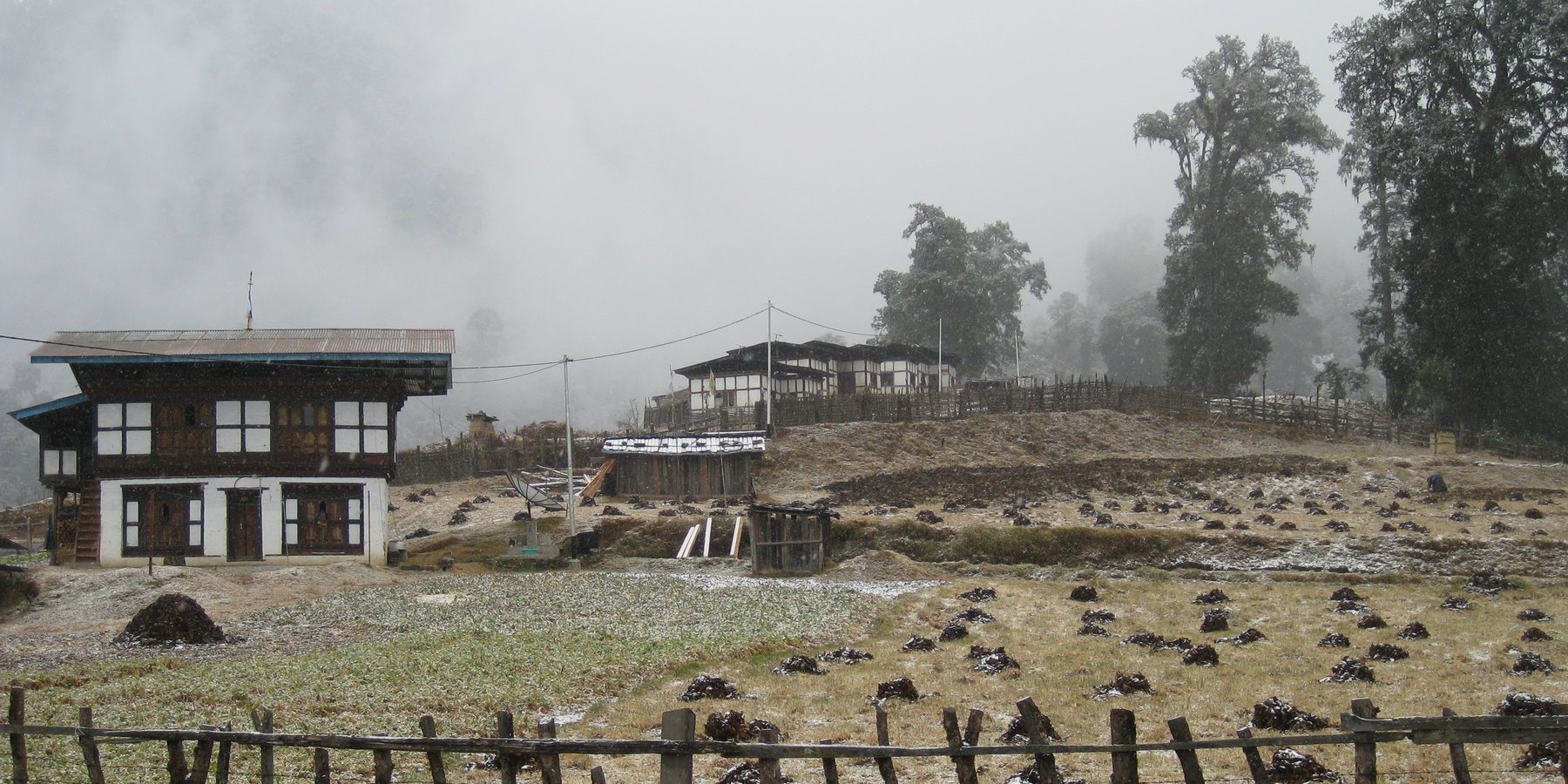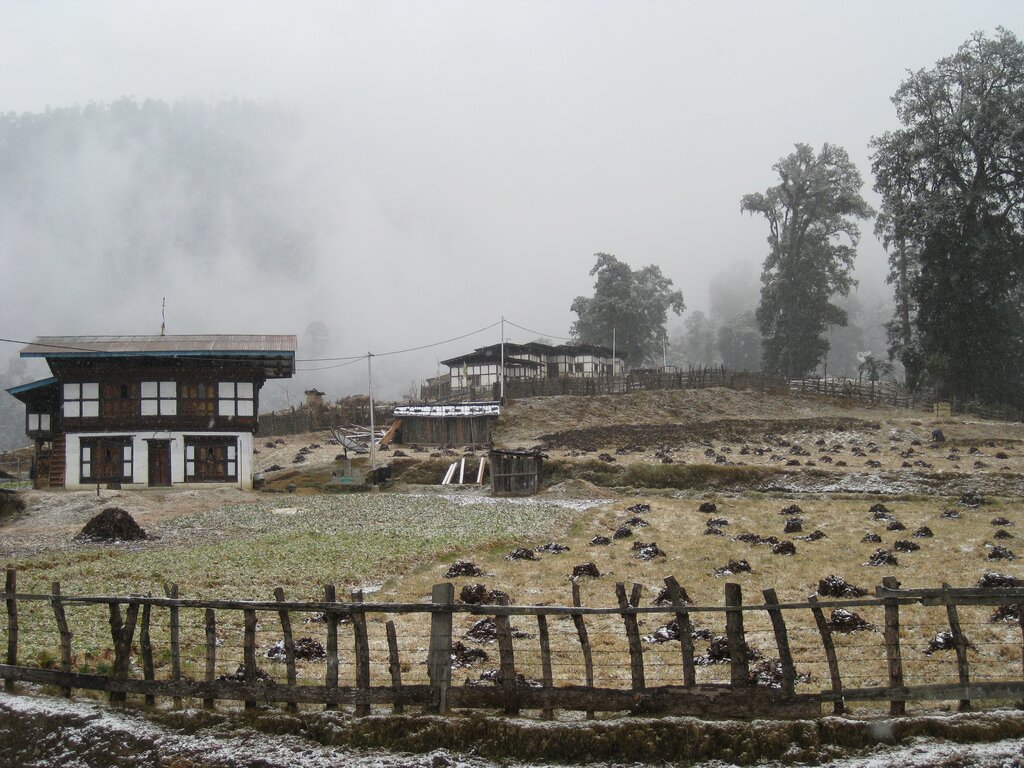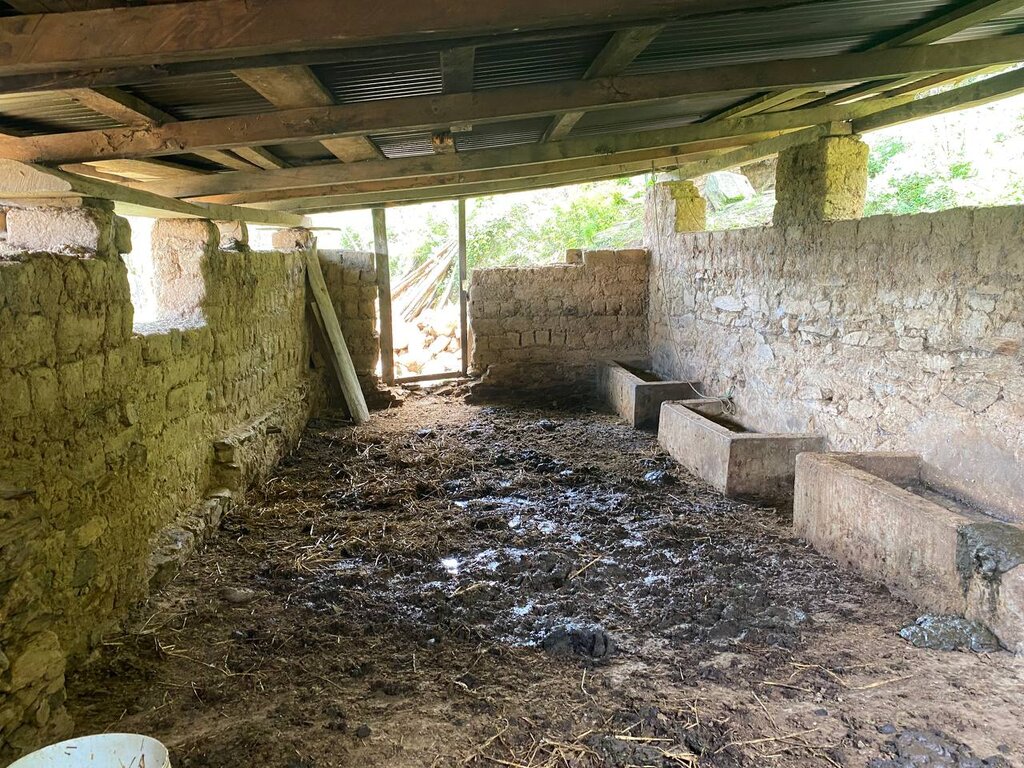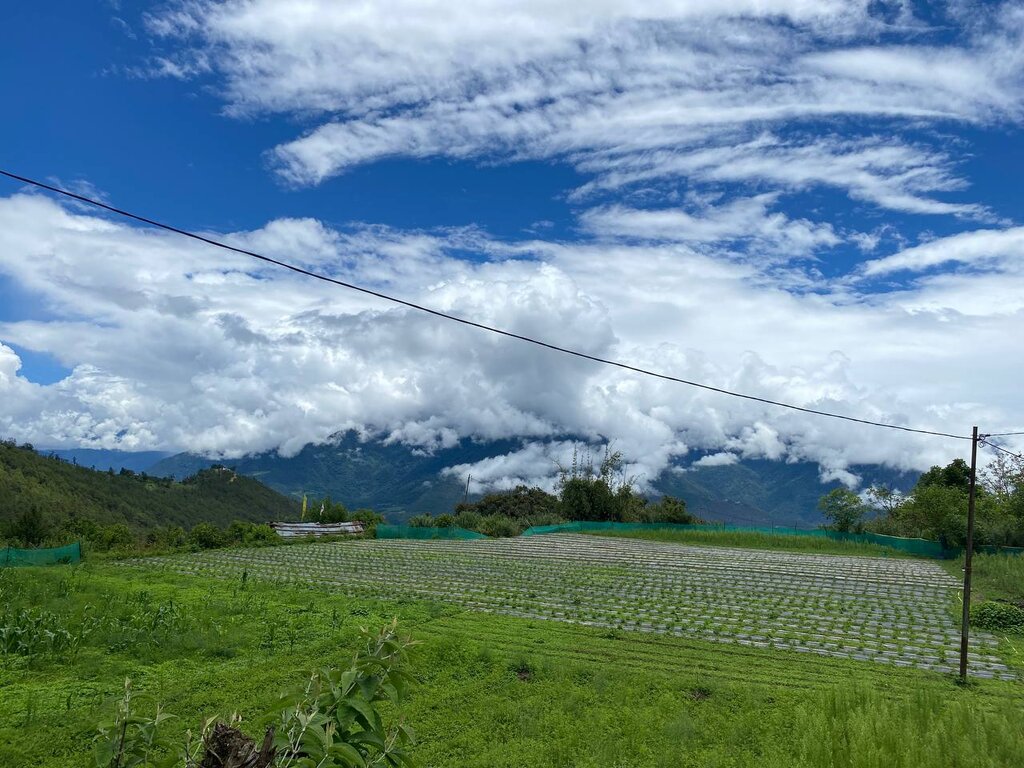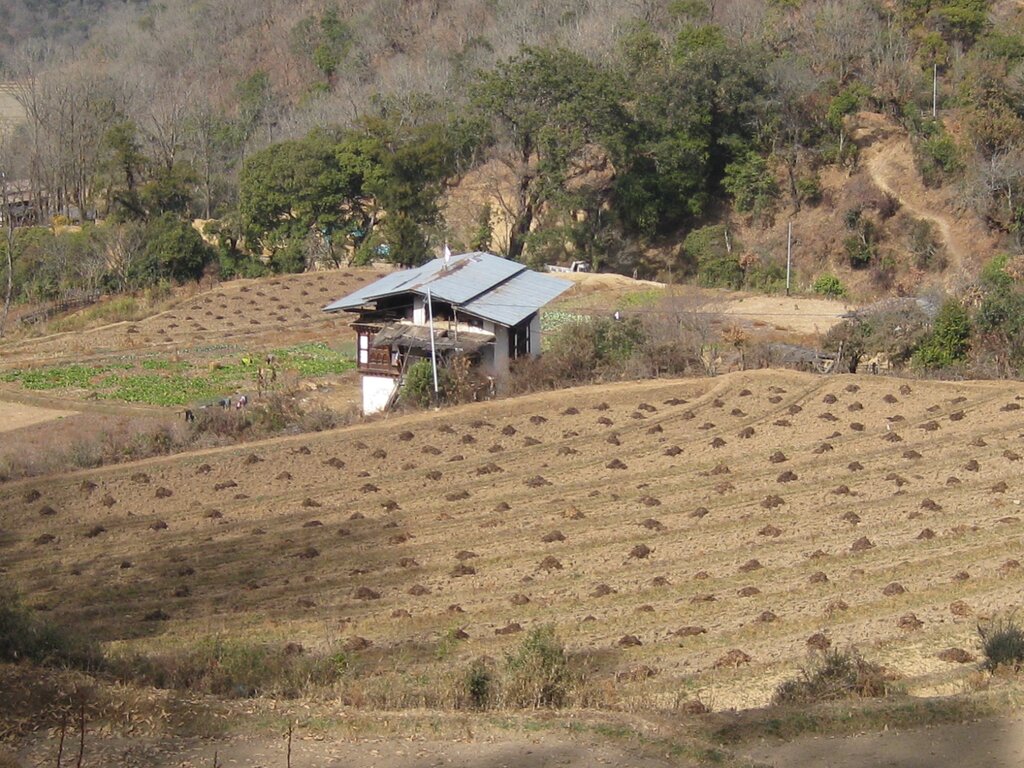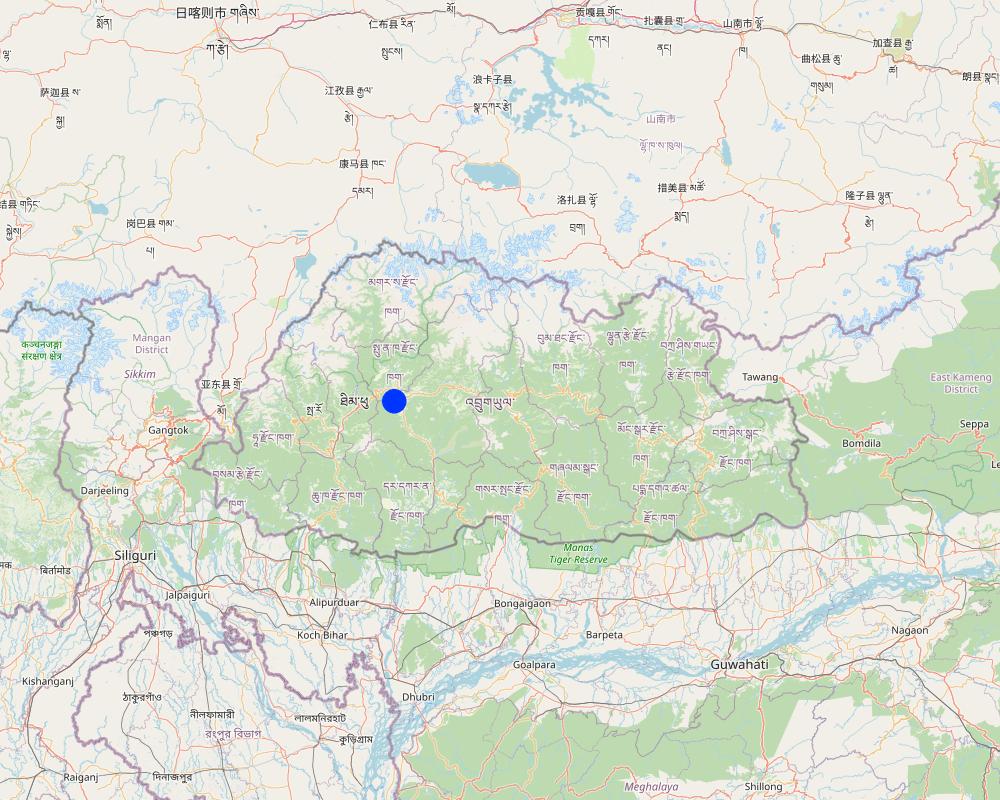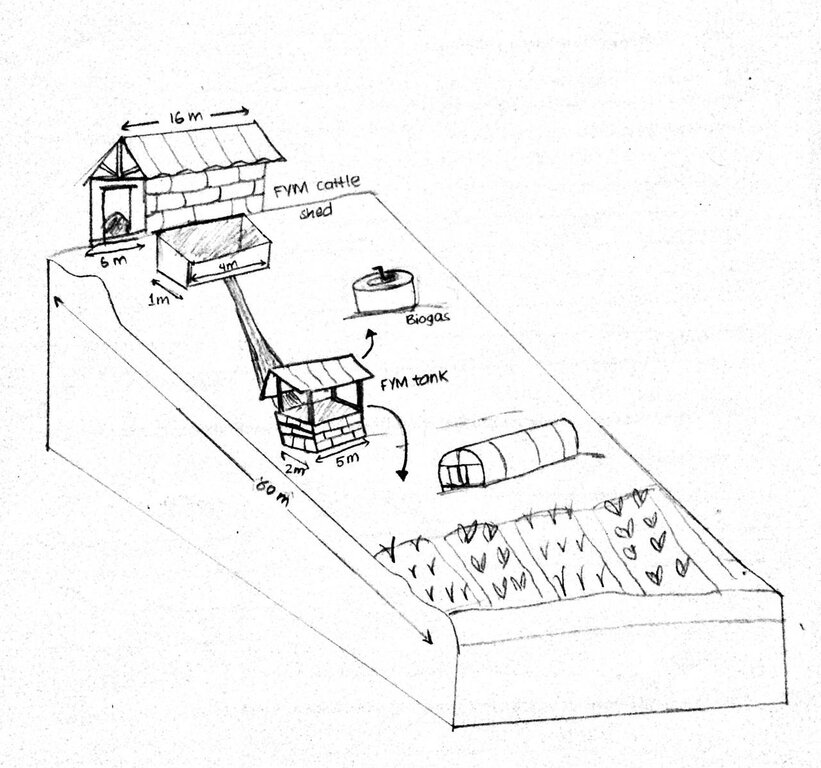Traditional Soil Fertility Management through FYM Application [不丹]
- 创建:
- 更新:
- 编制者: Karma Wangdi
- 编辑者: Kuenzang Nima
- 审查者: William Critchley, Rima Mekdaschi Studer
Norlue Luktey Sa Chue Yardrak Tang Thab (ནོར་ལུད་བླུགས་ཏེ་ ས་བཅུད་ཡར་དྲགས་བཏང་ཐབས།)
technologies_6822 - 不丹
查看章节
全部展开 全部收起1. 一般信息
1.2 参与该技术评估和文件编制的资源人员和机构的联系方式
关键资源人
土地使用者:
Zam Sonam
Tshokhorthangkha, Khujula, Wangdue phodrang
不丹
有助于对技术进行记录/评估的项目名称(如相关)
Strengthening national-level institutional and professional capacities of country Parties towards enhanced UNCCD monitoring and reporting – GEF 7 EA Umbrella II (GEF 7 UNCCD Enabling Activities_Umbrella II)有助于对技术进行记录/评估的机构名称(如相关)
National Soil Services Centre (National Soil Services Centre) - 不丹1.3 关于使用通过WOCAT记录的数据的条件
编制者和关键资源人员接受有关使用通过WOCAT记录数据的条件。:
是
1.4 所述技术的可持续性声明
这里所描述的技术在土地退化方面是否存在问题,导致无法被认为是一种可持续的土地管理技术?:
否
注释:
Since this technology has been practiced from the olden days
2. SLM技术的说明
2.1 技术简介
技术定义:
Traditional soil fertility management refers to the practice of improving and maintaining soil fertility using organic amendments, specifically farmyard manure (FYM). Other organic materials and crop residues can be effectively utilized through process of decomposition, fermentation and pyrolysis to produce compost, bokashi and biochar respectively.
2.2 技术的详细说明
说明:
Traditional soil fertility management refers to the practice of improving and maintaining soil fertility using organic amendments, specifically farmyard manure (FYM). Farmyard manure is a mixture of livestock excreta, bedding materials, and other organic wastes accumulated in the farmyard. It is typically left to decompose, or it is composted, before being applied to agricultural fields.
FYM application enhances soil fertility by replenishing essential plant nutrients, improving soil structure and moisture retention, increasing microbial activity, and promoting overall soil health. The organic matter in FYM serves as a nutrient source for plants, while also enhancing the soil's ability to retain water and nutrients, reducing erosion, and promoting beneficial microbial activity (Hossain et al., 2021).
Bhutan, a landlocked country nestled in the eastern Himalayas, has a predominantly agrarian economy. Farming practices in Bhutan often involve smallholder farmers who rely on traditional methods of soil fertility management, including the application of farmyard manure. According to Dorji et al., (2018) traditional soil fertility management through FYM application is very common in Bhutan. The use of FYM helps support sustainable agricultural production in the country.
Soil fertility management through FYM application in Bhutan, is conducted as follows. First and foremost, the collection of farmyard manure is essential, which involves the accumulation of livestock excreta, bedding materials, and organic waste in the farmyard. Then the collected material needs to be properly managed and decomposed through composting to ensure the production of high-quality farmyard manure. Adequate storage facilities for the composted manure should be established to prevent nutrient loss and maintain its quality. Additionally, farmers need to be trained and educated on the proper techniques of FYM application, including the optimal timing, rate, and method of application to maximize its effectiveness. Regular monitoring and assessment of soil fertility parameters are crucial to evaluate the impact of FYM application and make necessary adjustments to the management practices (Wangmo, 2020).
Traditional soil fertility management through FYM application in Bhutan offers numerous benefits and positive impacts as already noted. Furthermore, the use of FYM helps to reduce the dependency on synthetic fertilizers, thereby contributing to sustainable agriculture and minimizing the risk of environmental pollution. Overall, traditional soil fertility management through FYM application supports long-term soil health, sustainable agricultural production, and environmental conservation in Bhutan (Gyeltshen, 2020).
2.3 技术照片
2.4 技术视频
日期:
10/07/2023
位置:
Nahi, Wangdue Phodrang, Bhutan
摄影师的名字:
Niki Rai
2.5 已应用该技术的、本评估所涵盖的国家/地区/地点
国家:
不丹
区域/州/省:
Bhutan
有关地点的进一步说明:
Nahi, Wangdue Phodrang, Bhutan
具体说明该技术的分布:
- 均匀地分布在一个区域
如果不知道精确的区域,请注明大致覆盖的区域:
- < 0.1 平方千米(10 公顷)
技术现场是否位于永久保护区?:
否
注释:
Private land
Map
×2.6 实施日期
如果不知道确切的年份,请说明大概的日期:
- 50多年前(传统)
2.7 技术介绍
详细说明该技术是如何引入的:
- 作为传统系统的一部分(> 50 年)
注释(项目类型等):
This technologies that have been in use for generations
3. SLM技术的分类
3.1 该技术的主要目的
- 改良生产
- 减少、预防、恢复土地退化
- 保持/提高生物多样性
- 创造有益的经济影响
3.2 应用该技术的当前土地利用类型
同一土地单元内混合使用的土地::
是
具体说明混合土地使用(作物/放牧/树木):
- 农林牧业

农田
- 一年一作
年作 - 具体指明作物:
- 谷类 - 水稻(旱地)
年作制度:
玉米或类似的干草/牧场轮作
每年的生长季节数:
- 1
具体说明:
mostly annual crops are grown
采用间作制度了吗?:
是
如果是,说明哪些作物是间作的:
Maize + Beans
采用轮作制度了吗?:
是
如果是,请具体说明:
Rice- chili- Legumes- cereals
注释:
Annual cropping is done
3.3 由于技术的实施,土地使用是否发生了变化?
由于技术的实施,土地使用是否发生了变化?:
- 否(继续问题3.4)
同一土地单元内混合使用的土地::
否

农田
- 一年一作
年作 - 具体指明作物:
- 谷类 - 水稻(旱地)
年作制度:
玉米或类似的干草/牧场轮作
采用间作制度了吗?:
是
如果是,说明哪些作物是间作的:
Chili + Cabbage + Beans
采用轮作制度了吗?:
是
如果是,请具体说明:
Maize- Chili- cole crops
3.4 供水
该技术所应用土地的供水:
- 混合雨水灌溉
注释:
Irrigation through Smart irrigation provided by gewog. Smart irrigation refers to the application of advanced technologies such as drip and sprinkler irrigation to efficiently deliver the right amount of water to crops at the right time, minimizing water waste, conserving resources, and maximizing crop yield.
3.5 该技术所属的SLM组
- 轮作制度(轮作、休耕、轮垦)
- 农畜综合管理
- 土壤肥力综合管理
3.6 包含该技术的可持续土地管理措施

农艺措施
- A2:有机质/土壤肥力

管理措施
- M3:根据自然和人文环境进行布局
注释:
This technology comprises of Agronomic measures and management measures
3.7 该技术强调的主要土地退化类型

化学性土壤退化
- Cn:肥力下降和有机质含量下降(非侵蚀所致)

物理性土壤退化
- Pc:压实

生物性退化
- Bh:栖息地丧失
- Bl:土壤寿命损失
3.8 防止、减少或恢复土地退化
具体数量名该技术与土地退化有关的目标:
- 防止土地退化
- 减少土地退化
4. 技术规范、实施活动、投入和成本
4.1 该技术的技术图纸
4.2 有关投入和成本计算的一般信息
具体说明成本和投入是如何计算的:
- 每个技术单元
指定单位面积(如相关):
5 acre
其它/国家货币(具体说明):
Ngultrum
如相关,注明美元与当地货币的汇率(例如1美元=79.9巴西雷亚尔):1美元=:
82.0
注明雇用劳工的每日平均工资成本:
800
4.3 技术建立活动
| 活动 | 时间(季度) | |
|---|---|---|
| 1. | Site selection | Winter |
| 2. | Construction of cow shed | After site selection |
| 3. | Collection of FYM near the cow shed | regular basis |
| 4. | Washing off the by products into the pit | Every morning |
| 5. | Placement of FYM in the field | Before cultivation |
| 6. | Application of FYM in the field during cultivation | Before cultivation |
注释:
Government provided fund for the construction of cow shed including CGI sheets and cements
4.4 技术建立所需要的费用和投入
注释:
The construction materials are partially funded by the government
4.5 维护/经常性活动
| 活动 | 时间/频率 | |
|---|---|---|
| 1. | Wood change | Where there is damage due to heat and rain |
| 2. | CGI sheet change | Where there is damage due to heat and rain |
| 3. | Cement | For maintainance |
注释:
22 CGI sheets and 5 bags of cement were provided by gewog for maintainance
4.6 维护/经常性活动所需要的费用和投入(每年)
| 对投入进行具体说明 | 单位 | 数量 | 单位成本 | 每项投入的总成本 | 土地使用者承担的成本% | |
|---|---|---|---|---|---|---|
| 劳动力 | labor | per head | 6.0 | 500.0 | 3000.0 | 100.0 |
| 设备 | spade | nos. | 2.0 | 100.0 | ||
| 设备 | pickaxe | nos. | 2.0 | 100.0 | ||
| 设备 | Crowbar | nos. | 2.0 | 100.0 | ||
| 设备 | 100.0 | |||||
| 设备 | 100.0 | |||||
| 施工材料 | Wood | nos | 5.0 | 350.0 | 1750.0 | 100.0 |
| 施工材料 | CGI sheet | nos. | 22.0 | |||
| 施工材料 | cement | kg | 250.0 | |||
| 技术维护所需总成本 | 4750.0 | |||||
| 技术维护总成本,美元 | 57.93 | |||||
注释:
Wages for labor was paid by the land user whereas the construction materials were funded by the government
4.7 影响成本的最重要因素
描述影响成本的最决定性因素:
Financial and labor charge including working lunch
5. 自然和人文环境
5.1 气候
年降雨量
- < 250毫米
- 251-500毫米
- 501-750毫米
- 751-1,000毫米
- 1,001-1,500毫米
- 1,501-2,000毫米
- 2,001-3,000毫米
- 3,001-4,000毫米
- > 4,000毫米
指定年平均降雨量(若已知),单位为mm:
3733.00
有关降雨的规范/注释:
In July precipitation reaches at peak, with an average of 713 mm
注明所考虑的参考气象站名称:
NCHM
农业气候带
- 潮湿的
Warm temperate zone, One of the Bhutans agro climatic zone
5.2 地形
平均坡度:
- 水平(0-2%)
- 缓降(3-5%)
- 平缓(6-10%)
- 滚坡(11-15%)
- 崎岖(16-30%)
- 陡峭(31-60%)
- 非常陡峭(>60%)
地形:
- 高原/平原
- 山脊
- 山坡
- 山地斜坡
- 麓坡
- 谷底
垂直分布带:
- 0-100 m a.s.l.
- 101-500 m a.s.l.
- 501-1,000 m a.s.l.
- 1,001-1,500 m a.s.l.
- 1,501-2,000 m a.s.l.
- 2,001-2,500 m a.s.l.
- 2,501-3,000 m a.s.l.
- 3,001-4,000 m a.s.l.
- > 4,000 m a.s.l.
说明该技术是否专门应用于:
- 不相关
5.3 土壤
平均土层深度:
- 非常浅(0-20厘米)
- 浅(21-50厘米)
- 中等深度(51-80厘米)
- 深(81-120厘米)
- 非常深(> 120厘米)
如有可能,附上完整的土壤描述或具体说明可用的信息,例如土壤类型、土壤酸碱度、阳离子交换能力、氮、盐度等。:
Soil Type: Sandy clay loam
MC (%): 6.31
OM (%): 7.58
OC (%): 4.41
pH (H20): 6.69
EC (µs/cm): 1090
N (%):0.22
P (ppm):2.87
K (mg/100ml:562.4
5.4 水资源可用性和质量
地下水位表:
5-50米
地表水的可用性:
好
水质(未处理):
良好饮用水
水质请参考::
地表水
水的盐度有问题吗?:
否
该区域正在发生洪水吗?:
否
5.5 生物多样性
物种多样性:
- 中等
栖息地多样性:
- 中等
关于生物多样性的注释和进一步规范:
mixed vegetation
5.6 应用该技术的土地使用者的特征
定栖或游牧:
- 定栖的
生产系统的市场定位:
- 混合(生计/商业)
非农收入:
- 低于全部收入的10%
相对财富水平:
- 平均水平
个人或集体:
- 个人/家庭
机械化水平:
- 机械化/电动
性别:
- 女人
- 男人
土地使用者的年龄:
- 青年人
- 中年人
- 老年人
说明土地使用者的其他有关特征:
They are technically sound and educated
5.7 应用该技术的土地使用者使用的平均土地面积
- < 0.5 公顷
- 0.5-1 公顷
- 1-2 公顷
- 2-5公顷
- 5-15公顷
- 15-50公顷
- 50-100公顷
- 100-500公顷
- 500-1,000公顷
- 1,000-10,000公顷
- > 10,000公顷
这被认为是小规模、中规模还是大规模的(参照当地实际情况)?:
- 中等规模的
注释:
She owns more than five acres land
5.8 土地所有权、土地使用权和水使用权
- Family
- Family
用水权:
- 社区(有组织)
土地使用权是否基于传统的法律制度?:
是
5.9 进入服务和基础设施的通道
健康:
- 贫瘠
- 适度的
- 好
教育:
- 贫瘠
- 适度的
- 好
技术援助:
- 贫瘠
- 适度的
- 好
就业(例如非农):
- 贫瘠
- 适度的
- 好
市场:
- 贫瘠
- 适度的
- 好
能源:
- 贫瘠
- 适度的
- 好
道路和交通:
- 贫瘠
- 适度的
- 好
饮用水和卫生设施:
- 贫瘠
- 适度的
- 好
金融服务:
- 贫瘠
- 适度的
- 好
6. 影响和结论性说明
6.1 该技术的现场影响
社会经济效应
生产
作物生产
SLM之前的数量:
less
SLM之后的数量:
production doubled
作物质量
土地管理
注释/具体说明:
The application of FYM simplifies land management by improving soil structure, fertility, and health, which in turn promotes better crop growth and reduces the need for external inputs and interventions. Incorporating FYM into agricultural practices contributes to sustainable land management and long-term soil productivity
收入和成本
农业投入费用
农业收入
社会文化影响
食品安全/自给自足
SLM/土地退化知识
生态影响
土壤
土壤水分
土壤流失
养分循环/补给
生物多样性:植被、动物
生物量/地上C
有益物种
6.2 该技术的场外影响已经显现
对场外影响(测量)的评估进行具体说明:
There are no measurable off-site impacts
6.3 技术对渐变气候以及与气候相关的极端情况/灾害的暴露和敏感性(土地使用者认为的极端情况/灾害)
渐变气候
渐变气候
| 季节 | 增加或减少 | 该技术是如何应对的? | |
|---|---|---|---|
| 年降雨量 | 减少 | 未知 |
6.4 成本效益分析
技术收益与技术建立成本相比如何(从土地使用者的角度看)?
短期回报:
中性/平衡
长期回报:
积极
技术收益与技术维护成本/经常性成本相比如何(从土地使用者的角度看)?
短期回报:
中性/平衡
长期回报:
积极
注释:
Manure is used only if it is available near the farm
6.5 技术采用
- > 50%
如若可行,进行量化(住户数量和/或覆盖面积):
Almost all the farmer use or adopted this technology
在所有采用这项技术的人当中,有多少人是自发的,即未获得任何物质奖励/付款?:
- 51-90%
注释:
Not much of material is required for adopting this technology. Traditional farming system with spontaneous practice without any incentives
6.6 适应
最近是否对该技术进行了修改以适应不断变化的条件?:
否
6.7 该技术的优点/长处/机会
| 土地使用者眼中的长处/优势/机会 |
|---|
| Improve soil structure |
| Increases soil organic content |
| Helps manage soil fertility |
| 编制者或其他关键资源人员认为的长处/优势/机会 |
|---|
| Improve soil health and microbial activity |
| Method to improve soil fertlity |
6.8 技术的弱点/缺点/风险及其克服方法
| 土地使用者认为的弱点/缺点/风险 | 如何克服它们? |
|---|---|
| Labor intensive | Labor sharing |
| 编制者或其他关键资源人员认为的弱点/缺点/风险 | 如何克服它们? |
|---|---|
| Labor intensive and heavy field work causing compaction | Field applications should depend on soil moisture conditions |
7. 参考和链接
7.1 信息的方法/来源
- 实地考察、实地调查
1
- 与土地使用者的访谈
1
- 根据报告和其他现有文档进行编译
3
(现场)数据是什么时候汇编的?:
09/07/2023
7.2 参考可用出版物
标题、作者、年份、ISBN:
Impact of Traditional Soil Fertility Management through FYM Application on Crop Productivity, Hossain et al, 2021,
可以从哪里获得?成本如何?
Website
标题、作者、年份、ISBN:
Assessment of soil fertility management practices and their impact on soil properties in Bhutan, Dorji et al., 2018
可以从哪里获得?成本如何?
Website
标题、作者、年份、ISBN:
Assessment of soil fertility management practices in vegetable cultivation in Punakha, Bhutan, Wangmo et al, 2020
可以从哪里获得?成本如何?
website
标题、作者、年份、ISBN:
Impact of farmyard manure application on soil fertility status and crop productivity in Bhutan. Journal of Soil Science and Plant Nutrition. Gyeltshen et al, 2020
可以从哪里获得?成本如何?
website
标题、作者、年份、ISBN:
Rice husk biochar preparation, ARDC Bajo, JICA-IHPP
可以从哪里获得?成本如何?
https://www.youtube.com/watch?v=V66OpfCholw
标题、作者、年份、ISBN:
Fermented rice bran technology in Bhutan
可以从哪里获得?成本如何?
https://www.youtu.be/sIQtSm17VmQ
标题、作者、年份、ISBN:
Basics of compost preparation
可以从哪里获得?成本如何?
https://www.youtu.be/raZcwWJdnq4
7.3 链接到网络上的相关信息
标题/说明:
A Review. Journal of Soil Science and Plant Nutrition, 21(1), 1-15.
URL:
doi: 10.1007/s42729-020-00340-0.
标题/说明:
Journal of Soil Science and Plant Nutrition, 18(1), 88-100.
URL:
doi: 10.4067/s0718-95162018005000203.
标题/说明:
Journal of Bhutan Studies, 43, 29-50.
URL:
doi: 10.5281/zenodo.3889644.
标题/说明:
Journal of Soil Science and Plant Nutrition, 20(4), 2562-2572.
URL:
doi: 10.1007/s42729-020-00268-5.
标题/说明:
Land preparation technique
URL:
http://dx.doi.org/10.13140/RG.2.2.29316.60801
标题/说明:
Soil pH and EC technique
URL:
http://dx.doi.org/10.13140/RG.2.2.22605.72165
标题/说明:
Eggshell calcium extraction technique
URL:
http://dx.doi.org/10.13140/RG.2.2.23864.01282
标题/说明:
Training on organic fertilizer production techniques
URL:
http://dx.doi.org/10.13140/RG.2.2.15894.83521
标题/说明:
Assessment of Soil Nutrients Status of Mandarin Orchards in Dagana, 2020
URL:
Bhutanese Journal of Agriculture 2(1) 73-86, Department of Agriculture, Thimphu, Bhutan
链接和模块
全部展开 全部收起链接
无链接
模块
无模块


